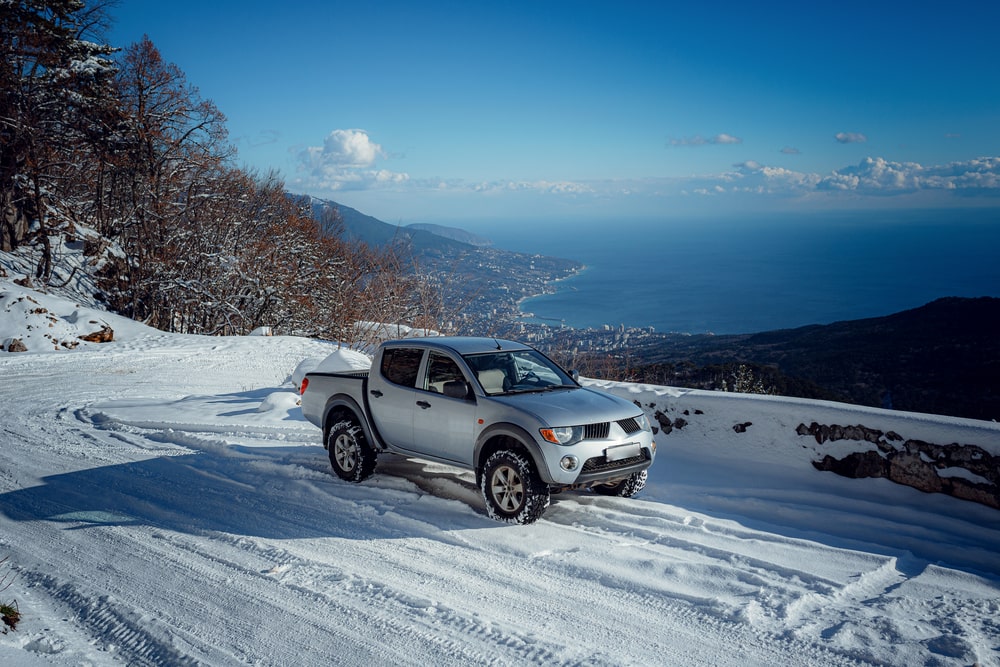Apart from being asked to help friends and family members who are moving, being a truck owner has many advantages. To start, the space you get is a luxury in itself. Instead of worrying about renting a bigger vehicle or borrowing someone else’s, you can use your own to transport things like furniture, appliances, or other oversized items. You can also store work materials or luggage in the truck’s bed when you travel. Besides the space, a truck’s body is heavier than other standard vehicles. Having a more robust body frame can improve driver safety in the event of an automobile accident.
But how do they fare in inclement weather? Are trucks good in the snow compared to other vehicles? Well, the answer exists in the details. Consider the following truck features and how each can help or hinder snow travel.
Weight
The distribution of a truck’s weight can significantly impact its ability to maneuver through the snow. If it carries more weight in the front, the imbalance can cause the vehicle to fishtail or the tires to spin. In the worst-case scenario, you can lose control of the truck entirely.
SUVs and sedans, however, are often more balanced because their weight distribution is more even. Because of this, steering and hitting the brakes are much more manageable when driving in the snow. With a proper weight balance, you gain more traction as the tires push into the ground to better grip snow or ice.
Should you add more weight to a truck’s bed or a vehicle’s trunk to increase traction and help navigate the winter snow if it’s vulnerable to sliding? Well, the answer depends on its drivetrain.
Drivetrain
A vehicle’s drivetrain includes several components that power the wheels to make it move. Some drivetrains send power to the front or rear wheels only. Others, however, send power to all four. But when driving under snowy conditions, a truck with 4-wheel drive (4WD) or all-wheel drive (AWD) is the best option to navigate the terrain. With all four tires moving, you minimize your chances of getting stuck in the snow. If the conditions are extremely treacherous and the snow is deep, a 4WD vehicle is the most suitable choice.
Vehicles with front-wheel-drive or rear-wheel drive only power two wheels, making it more challenging to navigate through the snow. To improve winter traction, you can add weight to the back of a rear-wheel-drive (RWD) vehicle, including a sedan or SUV. Sandbags, cat litter, and rock salt are popular options to help weigh down the back. You can also use these materials to gain traction on the ground if you get stuck. Just be sure to check your owner’s manual beforehand to ensure you stay within the recommended payload and place the weight in the proper location in the back. That said, adding weight to FWD or AWD vehicles can cause an imbalance, so you will want to avoid the additional weight in these vehicles altogether.
Tires
No matter your vehicle’s drivetrain, investing in a solid set of snow tires can be a considerable perk for winter driving. Because manufacturers specifically design them with grooves for efficient traction to grip snow and ice effectively, they can improve maneuverability and enhance safety. And while snow tires benefit all vehicle types, having them on a 2WD truck and adding weight to the back can significantly improve winter driving.
Ground Clearance & Visibility
Manufacturers design trucks to sit up higher, allowing drivers to better view their surroundings. In addition, the ground clearance enables trucks to plow through the snow more easily than sedans. However, what if the streets are congested with cars stuck in the snow? Unfortunately, driving a big truck through tiny spaces can be challenging. Thus, sedans can be much easier to control and maneuver through a narrow street because they are smaller.
Driveability
While driving an AWD or 4WD truck is ideal for winter, installing high-quality snow tires can significantly improve any automobile in wintry conditions. But the best motor vehicle to operate in the winter is the one you are most comfortable driving.
Suppose you own a truck and can confidently handle it in the snow and winterize it before the weather changes; great! However, you can improve an SUV or sedan’s traction by adding weight when appropriate and buying a solid set of snow tires. That said, a truck with 4WD or AWD and high-quality tires ultimately delivers the best snow performance for winter weather driving.
Take Steps to Prep for an Emergency Beforehand
Preparing your vehicle for the winter, no matter what you drive, can make a big difference in an emergency. Ensure you’re up-to-date on routine maintenance and invest in a reliable breakdown coverage plan before the bad weather hits. Under the right provider, you can secure an agreement with invaluable roadside assistance. Should you experience a mechanical failure or get stuck on the side of the road, a towing company can assist you onsite or tow you to the nearest mechanic. Start your search today by reviewing our top vehicle warranty programs here.





